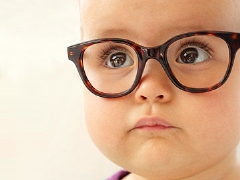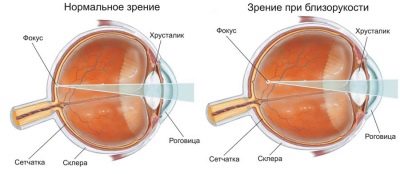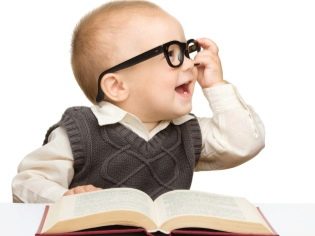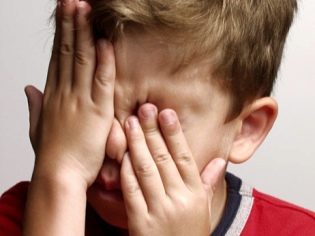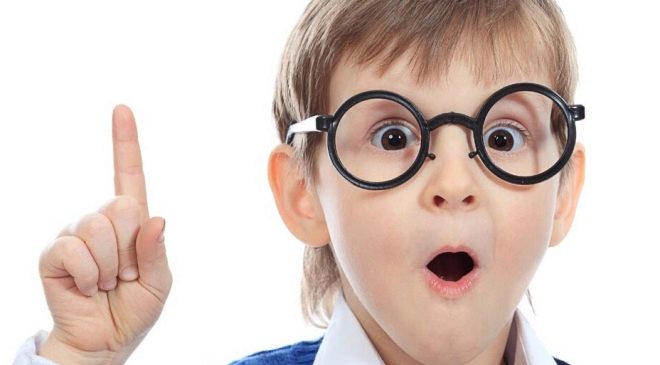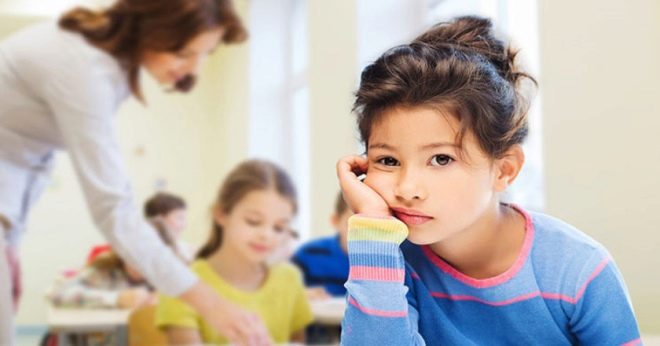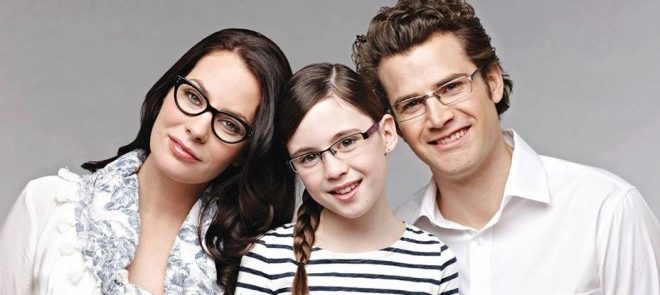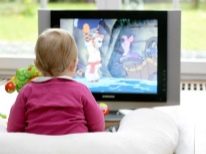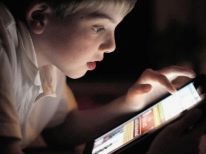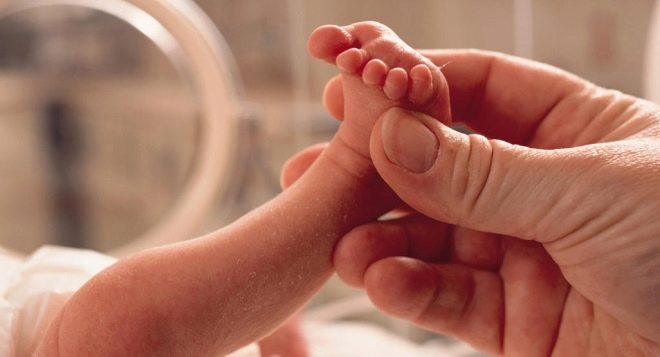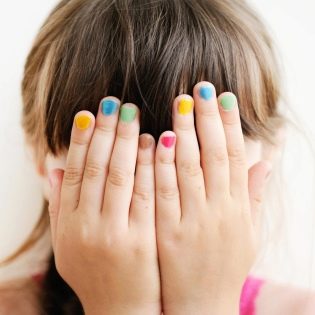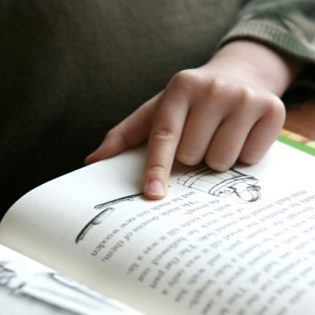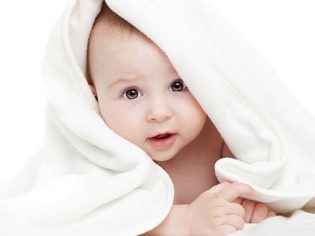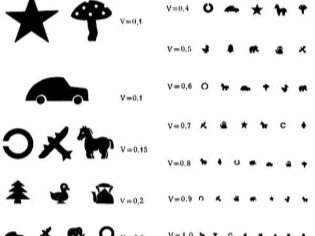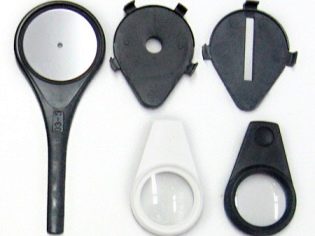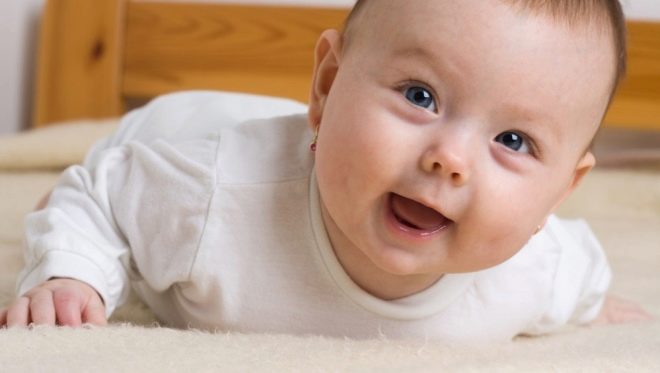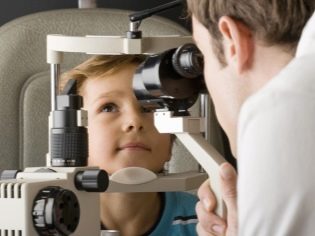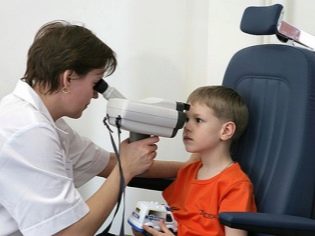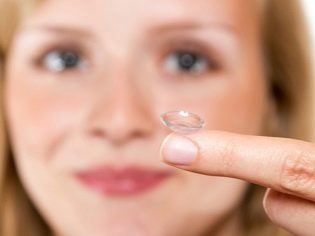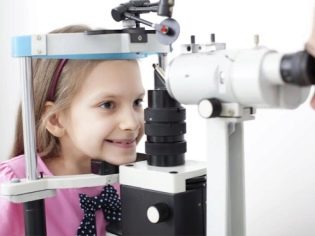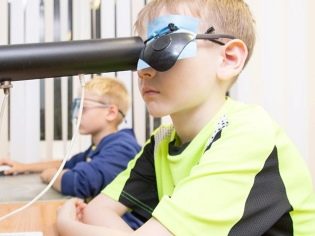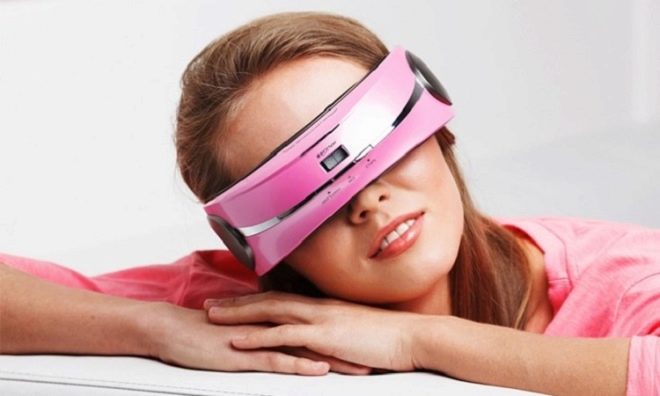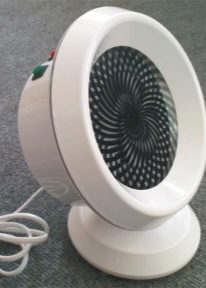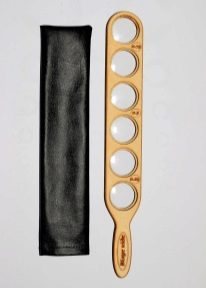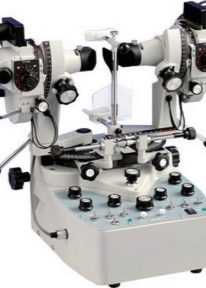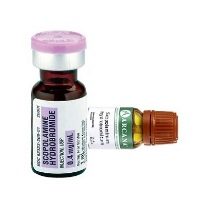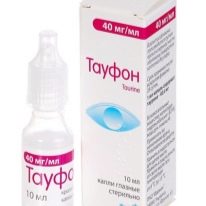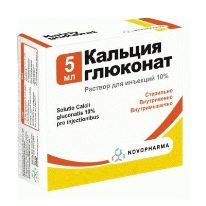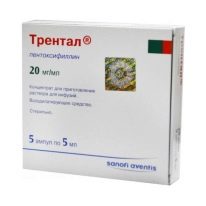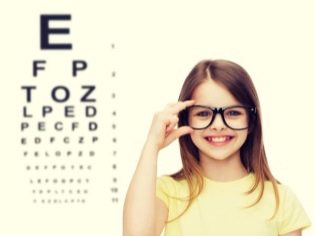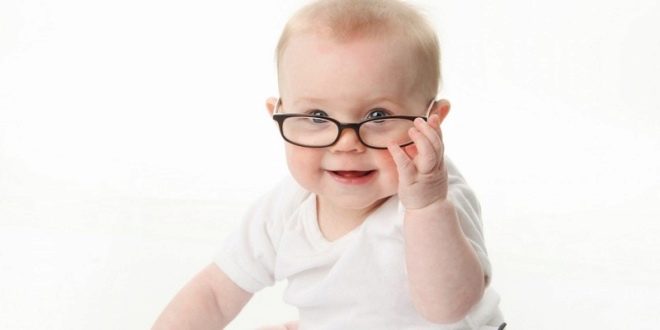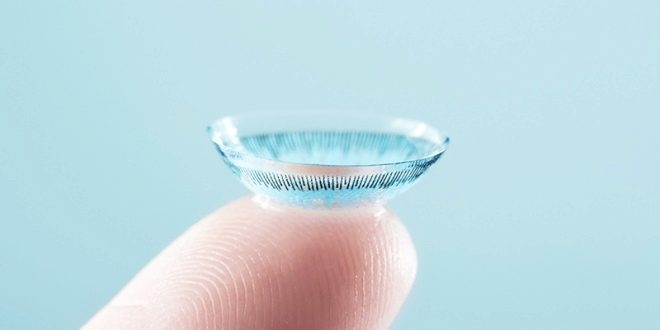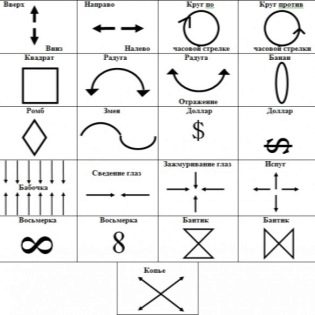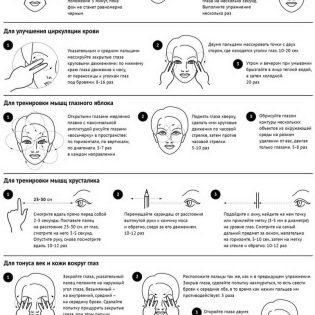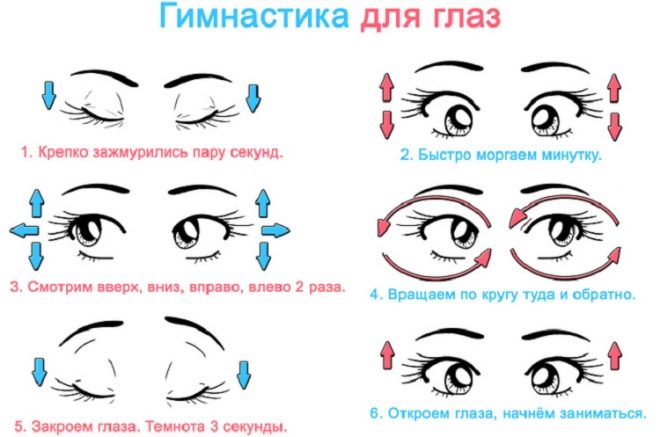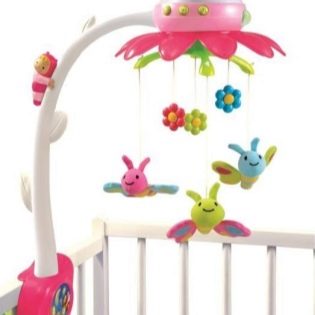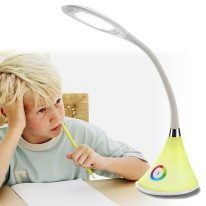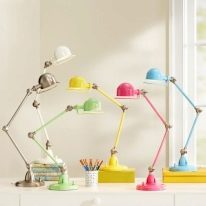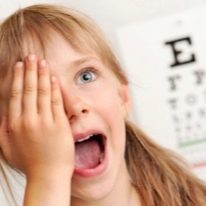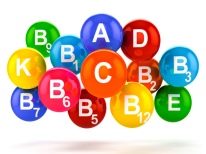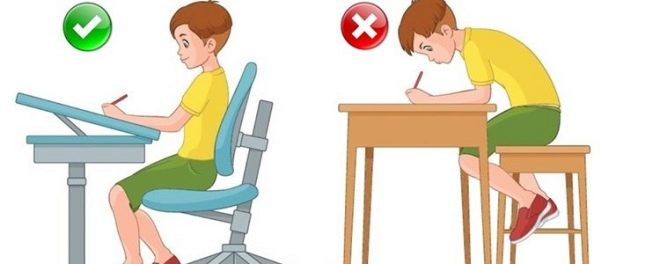Myopia in children
Myopia is called a disease of civilization. With the advent of computers and high technologies into our lives, which put a serious strain on the organs of vision, myopia has become much younger, and ophthalmologists make this diagnosis at an early age to an increasing number of children. Why this happens and whether it is possible to cure myopia in a child, we will tell in this article.
What it is
Myopia is an abnormal change in the visual function, in which the image that the child sees is not focused directly on the retina, as it should be normal, but in front of it. Visual images do not reach the retina for a number of reasons - the eyeball is too elongated, the rays of light are refracted more intensely. Regardless of the root cause, the child perceives the world as somewhat vague, because the image itself does not fall on the retina itself. In the distance, he sees worse than near.
However, if the child brings the subject closer to the eyes or uses negative optical lenses, the image begins to form directly on the retina, and the object becomes clearly visible. Myopia may be different according to the classification, but almost always it is a disease that is to some extent determined genetically. The main types of eye disease:
- Congenital myopia. It is very rare, it is associated with pathologies of the development of visual analyzers, which occurred at the stage of organ insertion in utero.
- High grade myopia. With such an eye disease, the severity of visual impairment is at a level higher than 6.25 diopters.
- Combination myopia. Usually, this is myopic insignificant degree, but with it the usual refraction of rays does not occur due to the fact that the refractive abilities of the eye are in imbalance.
- Spasmodic myopia. This visual disorder is also called false or pseudo-near-sightedness. The child begins to see the image vague due to the fact that the ciliary muscle comes in an increased tone.
- Transient myopia. This condition is one of the types of false myopia, occurs against the background of the use of certain drugs, as well as diabetes.
- Transient night myopia. With this visual impairment, the baby sees everything absolutely normal during the daytime, and with the onset of darkness the refraction is broken.
- Axial myopia. This is a pathology in which refraction develops due to a violation of the length of the axis of the eyes in a big direction.
- Complicated myopia. In this disorder of the visual function, due to the anatomical defects of the organs of vision, a refractive error occurs.
- Progressive myopia. With this pathology, the degree of visual impairment is constantly increasing, as the posterior part of the eye is over-stretched.
- Optical myopia. This vision disorder is also called refractive. When it is in the eye itself there are no violations, but there are pathologies in the optical system of the eye, in which the refraction of the rays becomes excessive.
Despite the abundance of pathology types, in ophthalmology pathological and physiological visual disturbances are distinguished.Thus, physiological species consider axial and refractive myopia, and pathological disorder - only axial.
Physiological problems are caused by the active growth of the eyeball, the formation and improvement of visual function. Pathological problems without timely treatment can lead to disability of the child.
Pediatric myopia is in most cases curable. But the time and effort that will have to be spent on this is directly proportional to the extent of the disease. In total, there are three degrees of myopia in medicine:
- mild myopia: vision loss up to - 3 diopters;
- average myopia: vision loss from - 3.25 diopters to - 6 diopters;
- high myopia: vision loss over - 6 diopters.
Unilateral myopia is less common than bilateral myopia when refractive problems affect both eyes.
Age features
Almost all newborn babies have a shorter eyeball than adults, and therefore congenital farsightedness is the physiological norm. The eye of the baby is growing, and doctors often call this hyperopia a “hyperopia reserve”. This stock is expressed in specific numerical values - from 3 to 3.5 diopters. This stock is useful to the child in the period of enhanced growth of the eyeball. This growth occurs mainly up to 3 years, and the complete formation of the structures of visual analyzers is completed by approximately the younger school age - at the age of 7-9 years.
The reserve of hyperopia is consumed gradually, as the eyes grow, and normally the child ceases to be farsighted by the end of kindergarten. However, if this “stock”, given by nature, is insufficient for a child at birth and is about 2.0-2.5 diopters, then doctors talk about the possible risk of myopia, the so-called threat of myopia.
The reasons
The disease can be inherited if mom or dad or both parents suffer from myopia. It is genetic predisposition that is considered to be the main reason for the development of a deviation. It is not necessary that, at birth, the child will have myopia, but it is very likely to begin to make itself felt even at preschool age.
If you do nothing, do not provide correction and help to the child, myopia will progress, which one day may cause loss of vision. It should be understood that the fall in vision is always caused not only by genetic factors, but also by external factors. Adverse factors considered excessive load on the organs of vision.
This load gives a long watching TV, playing at the computer, improper landing at the table during creativity, as well as insufficient distance from the eyes to the object.
In premature babies who were born before the appointed obstetric period, the risk of developing myopia is several times higher, because the baby’s vision does not have time to “ripen” in utero. If there is a genetic predisposition to weak eyesight, myopia is almost inevitable. Congenital abnormalities can be combined with weak scleral abilities and increased intraocular pressure. Without a genetic factor, such a disease rarely progresses, but it is impossible to completely exclude such a probability.
In the overwhelming majority of cases, myopia develops to school age, and the appearance of abnormalities in vision is influenced not only by heredity and adverse external factors, but also malnutrition, rich in calcium, magnesium, and zinc.
Concomitant diseases may also affect the development of myopia. Such illnesses include diabetes, Down syndrome, frequent acute respiratory infections, scoliosis, rickets, spinal injuries, tuberculosis, scarlet fever and measles, pyelonephritis and many others.
Symptoms
Pay attention to the fact that the child has become worse to see, parents should as soon as possible. After all, the early correction brings positive results.A child will not have complaints, even if his visual function has deteriorated, and it is almost impossible to formulate a problem in words for kids. However, mom and dad can pay attention to some features of the child's behavior, because when the function of the visual analyzer is impaired, which gives the lion's share of ideas about the world, the behavior changes dramatically.
The kid can often complain of headache, fatigue. He cannot draw, sculpt or assemble a designer for a long time, because he is tired from the need to constantly concentrate his eyesight. If the child sees something interesting for himself, he can begin to squint. This is the main sign of myopia. Older children, in order to make their task easier, begin to pull the outer corner of the eye with their hands to the side or down.
Kids who began to see worse lean very low above a book or an album for drawing, trying to “bring closer” to themselves the image or text.
A child under one year old ceases to be interested in silent toys, which are removed from them by a meter or more. Since the crumb cannot see them normally, and motivation at this age is not enough. Any suspicion of parents is worthy of being checked by an ophthalmologist on an unscheduled examination.
Diagnostics
Primarily, the child’s eyes are examined in the maternity hospital. Such an examination can establish the fact of gross congenital malformations of the organs of vision, such as congenital cataracts or glaucoma. But to establish a predisposition to myopia or its very fact on this first examination is not possible.
Myopia, if it is not associated with congenital malformations of the visual analyzer, is characterized by gradual development, and therefore it is so important to show the child to an optometrist in the allotted time. Scheduled visits should be carried out in 1 month, half a year and a year. Prematurely tops are recommended to visit an ophthalmologist also at 3 months.
It is possible to identify myopia starting from six months, because at this time the doctor will be able to more fully assess the ability of the children's organs of vision to normal refraction.
Visual and test validation
Diagnosis begins with an external examination. Both in infants and older children, the doctor assesses the position and dimensional parameters of the eyeballs, their shape. After that, the doctor establishes the ability of the baby to closely monitor a fixed and moving object, fix the gaze on a bright toy, gradually moving away from the toddler, and assessing from what distance the baby stops perceiving the toy.
For children from one and a half years use Orlova table. There are no letters in it that a child of preschool age does not yet know, there are no complicated images. It consists of familiar and simple symbols - an elephant, a horse, a duck, a typewriter, a plane, a fungus, an asterisk.
In total, there are 12 rows in the table, in each subsequent top to bottom the size of the pictures decreases. On the left in each row of the Latin “D”, the distance from which the baby normally should see pictures is marked, and on the right of the Latin “V” visual acuity is indicated in arbitrary units.
It is considered normal vision if the child sees from a distance of 5 meters in the tenth line from the top. About myopia can say a decrease in this distance. The smaller the distance from the child's eyes to the sheet with the table at which he sees and calls the pictures, the more pronounced and myopia.
You can also check your eyesight using the Orlova table at home; all you have to do is print it on an A4 sheet and hang it at eye level in a room with good lighting. Before you test or go to an eye doctor, be sure to show the child this table and tell how all the items on it are called so that the kid can easily call with words what he sees.
If the child is too small to be able to check his eyesight with the help of tables, or when testing some deviations from the norm are found, the doctor will definitely examine the child's eyes with an ophthalmoscope.
He will carefully examine the state of the cornea and anterior chamber of the eyeball, as well as the lens, vitreous body, fundus of the eye. Certain visual changes in the anatomy of the eye are characteristic of many forms of myopia, and the doctor will notice them.
Separately, you need to say about strabismus. Myopia is often accompanied by such a well-distinguishable pathology, such as divergent squint. A slight strabismus may be a variant of the physiological norm in young children, but if the symptoms have not gone away by half a year, the child should definitely be examined by an eye doctor for myopia.
Samples and ultrasound
Skiascopy or shadow test is carried out with the help of the main ophthalmologist's tool - the ophthalmoscope. The doctor is located at a distance of one meter from a small patient and using the device illuminates his pupil with a red beam. During the movements of the ophthalmoscope, a shadow appears on the pupil illuminated with red light. When sorting lenses with different optical properties, the doctor with great accuracy establishes the presence, nature and severity of myopia.
Ultrasound diagnosis (ultrasound) allows you to make all the necessary measurements - the length of the eyeball, anteroposterior size, as well as to establish whether there are retinal detachments and other complicating pathologies.
Treatment
Treatment for myopia should be prescribed as soon as possible, since the disease tends to progress. In itself, the visual impairment does not pass, the situation must be under the control of doctors and parents. Myopia of a slight mild degree is well corrected even with home treatment, which is only a set of recommendations - massage, eye exercises, and wearing medical glasses.
More complex forms and stages of myopia require additional therapy. The doctors' forecasts are quite optimistic - even serious forms of myopia can be corrected, the drop in vision can be stopped and even the child’s normal ability to see can be restored. However, this becomes possible only if treatment began as early as possible, until the structure of the eye has undergone irreversible changes.
The choice of a therapeutic measure is the business of a doctor, especially since there is something to choose from - today there are several ways to correct myopia.
Rarely, doctors stop in only one way, because the best results are shown only by complex treatment. It is possible to restore sight, to correct the violation when wearing glasses and contact lenses, using laser correction methods. In some cases, doctors have to resort to refractive lens replacement and implanting phakic lenses., alignment of the cornea surgically (operation keratotomy) and replacing part of the affected cornea with a transplant (keratoplasty). Also effective treatment on special simulators.
Hardware treatment
Hardware treatment in some cases, avoids surgery. It is shrouded in an aura of rumors and different opinions: from enthusiastic to skeptical. Reviews of such techniques are also very different. However, the harm of this method of correction has not been officially proven by anyone, and even the ophthalmologists themselves are increasingly talking about the benefits.
The essence of the hardware treatment is to activate the body’s own capabilities and restore lost vision through exposure to the affected parts of the eye.
Apparatus therapy does not cause pain to little patients. It is acceptable from a security point of view. This is a complex of physiotherapy, which the child with myopia will take in several courses on special devices. The impact will be different:
- magnetostimulation;
- electrical stimulation;
- laser stimulation;
- photostimulation;
- optical training of accommodation;
- training of the eye muscles and optic nerve;
- massage and reflexology.
It is clear that gross defects of the organs of vision, serious diseases, such as cataracts or glaucoma, are not treated by the hardware method, since a mandatory surgical operation is required. But myopia, hyperopia and astigmatism respond well to correction in this way. Moreover, it is the treatment of myopia that is considered the most successful with the use of special devices.
For therapy use several basic types of devices. These are maculostimulants, vacuum eye massagers, the Kovalenko line, the Sinoptofor apparatus, instruments for stimulating with color photo spots and a laser.
Numerous reviews of hardware treatment relate mainly to the cost of such procedures and the duration of the effect. The fact that sessions are a pleasure is not cheap, all parents repeat, as well as that the lasting effect of hardware treatment is achieved only with systematic repetitions of treatment courses.
After one or two courses, the resulting improvement effect may disappear in a couple of months.
Drug treatment
Treatment of myopia with medication is prescribed when the child is in the postoperative period after surgery on the eyes, as well as to eliminate false or transient myopia. Eye drops are commonly used.Tropicamide" or "Scopolamine". These drugs act on the ciliary muscle, almost paralyzing it. Due to this, the accommodation spasm decreases, the eye relaxes.
While the treatment is going on, the child starts to see even more closely, read, write, work at the computer will be quite difficult for him. But the course usually lasts about a week, not more.
These drugs have another unpleasant effect - they increase the intraocular pressure, which is undesirable for children with glaucoma. And because the independent use of such drops is unacceptable, the prescription of the attending oculist is required.
In order to improve the nutrition of the eye’s media, the drug “Taufon". Despite the fact that manufacturers indicate the minimum age for use - 18 years, these eye drops are quite widespread in pediatric practice. Almost all children with myopia doctors prescribe calcium supplements (usually "Calcium gluconate"), Microcirculation enhancers in the tissues ("Trental") As well as vitamins, especially vitamins A, B 1, B 2, C, PP.
Glasses and lenses for myopia
Points for myopia help to normalize refraction. But they write them out to children only with weak and moderate degrees of the disease. At a high stage of myopia, glasses are ineffective. Glasses with myopia are indicated by a number with a "-" sign.
Selection of points involved in the oculist. He will bring various glasses to the child until the baby sees the tenth line of the test table from a distance of 5 meters. Depending on the severity of the disease, the doctor recommends wearing glasses at a certain time. If a child has a weak degree, then glasses should be worn only when it is necessary to consider objects and objects located in the distance. The rest of the time, no glasses are worn. If you ignore this rule, myopia will only progress.
With a moderate degree of myopia, glasses are prescribed to wear during training, reading, drawing. Quite often, in order not to aggravate the loss of vision from the constant use of medical glasses, doctors recommend these children to wear bifocal glasses, the upper part of the lenses of which is several diopters higher than the lower.Thus, when looking up and into the distance, the child looks through “medicinal” diopters, and reads and draws through lenses that have smaller numerical values.
Contact lenses
Contact lenses are more comfortable than glasses. Psychologically, their wearing is more easily perceived by children than wearing glasses. With the help of lenses you can correct not only mild and moderate degree of visual impairment, but also high myopia. The lenses fit more closely to the cornea, this reduces the possible errors in the refraction of light that occur when wearing glasses, when the eyes of a child can move away from the lens-glass.
Often parents are puzzled by the question from what age they can wear lenses to children. This is usually recommended when the child is 8 years old. Soft day or hard night lenses should be prescribed by a doctor. It is best suited for children age disposable lenses that do not need careful hygienic treatment before reuse.
When choosing reusable lenses parents should be prepared for the fact that they require very close care so as not to infect the organs of vision of the baby.
Hard night lenses are not worn during the day; they are used only at night when the child is sleeping. In this morning they are removed. The mechanical pressure on the cornea, which the lenses exert over night, helps the cornea to “straighten up”, and during the daytime the child sees almost normal or normal. Night lenses have a lot of contraindications, and doctors still haven’t agreed on whether these remedies are useful for a child’s body.
Laser correction
This is a fairly widely used method for myopia. With weak and middle stages of the disease, as well as with a high degree with vision loss of up to 15 diopters, the procedure gives visible positive results. However, it should be well understood that the correction does not cure the vision, but only allows you to compensate for its loss.
The procedure lasts only a few minutes. Anesthesia is achieved with the use of eye drops. During the correction, part of the curved cornea will be removed, this will allow aligning its layer, and leading to normal values of the optical ability of the eye to refract the rays. After correction, the child is forbidden to rub his eyes with his hands, wash his face with dirty water, overstrain his eyesight and exercise.
Surgery
Surgical treatment of myopia is indicated for complex and severe forms of ocular pathology. An important condition for offering parents an operation for a child is the progress of the violation. If a baby loses about 1 dioptre per year, this is an unconditional indication for surgery.
The most frequent intervention is considered to be the replacement of the lens. Under the local anesthesia, the child’s own damaged lens is replaced with a lens, which is implanted into the lens capsule. Any operations that are performed on the organs of vision with myopia have one goal - to strengthen the back of the eye to stop the decline in vision. Using a curved needle, a special gel or softened cartilage tissue is injected into the back of the eye to make it impossible for the sclera to stretch.
Scleroplasty can stop the decline in visual function in about 70% of operated children. They are shown further comprehensive treatment, including the wearing of glasses, hardware treatment (at the request of the parents), medicines that the doctor will prescribe.
Eye gymnastics for myopia
In many forms of myopia, doctors recommend teaching children daily eye exercises. It includes exercises for circular and axial movements of the eyeballs, examining near and distant objects. The most interesting and effective for children, in which the visual impairment is corrected, is gymnastics by method of professor Zhdanov.
It is not necessary to do a full range of exercises provided by the method every day. Only 10-15 minutes a day is enough to do 2-3 exercises with a child in a playful way. With mild myopia, such gymnastics allows you to stop a further drop in vision and even correct it without any other treatment.
Prevention
The World Health Organization believes that the specific prevention of myopia does not exist. After all, given the existing genetic predisposition, the disease sometimes develops independently of external factors.
However, saving the eyesight of most children and avoiding a high degree of myopia is still possible.
You also need to follow simple and important rules:
- Children up to one year old No need to hang toys too close to your face. The distance to the rattles and mobile should be at least 45-50 cm.
- Children from one and a half years you need to instill a good habit of keeping all the objects you need to look at (books, drawings, toys) at least 30 centimeters from your eyes. It is impossible to read lying, as well as to use a mobile phone, viewing something on its screen while walking or during a trip on a transport.
- Preschoolers, schoolchildren and teenagers it is necessary to ensure the correct lighting of the working space where the child plays, reads, draws, does homework. To do this, you need to not only buy a good desk lamp, but also take care of the background lighting of the entire room.
- The eyes of the child should not overwork. In a healthy baby with a long sitting at a computer, visual analyzers experience fatigue after only two hours. In children with myopia, this time period is even less - it is only 35-45 minutes. It is clear that completely avoid eye strain will not work, especially for the student. But when reading or writing, and also while working in front of a computer monitor, you need to pause for 5-10 minutes every 20-30 minutes in order to switch to another activity that does not require significant visual concentration.
- Child nutrition should be rich in vitamins., balanced.
- The child must sit properly while working.and also monitor your posture.
Why does a child's eyes go bad? This video will help you figure it out.
